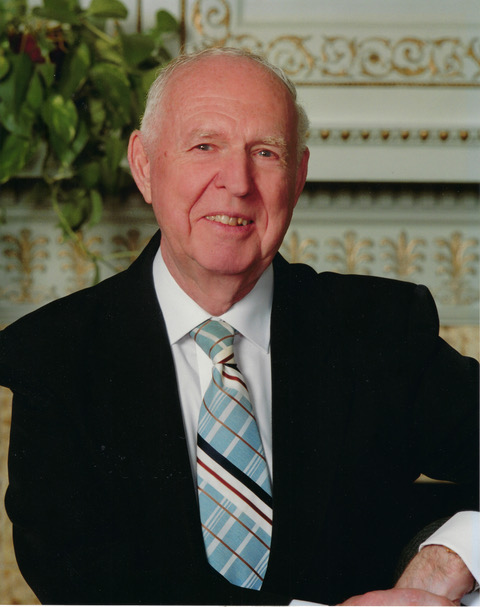An Augusta man said he’s solved a math problem that dates back thousands of years to ancient Greece and was thought to be proven impossible to solve in 1837.
Bill Rollins Jr., 97, a lifelong Augusta resident and retired state Department of Transportation engineer, has written and self-published a book, “Trisecting an Angle,” to share his solution.
The seemingly simple task of dividing an arbitrary angle into three equal sections, using only a compass and an umarked straightedge ruler, has captivated mathematicians for more than two millennia.
In 1837, Pierre Wantzel is thought to have proven that solving the problem within those confines was impossible.
After learning about the longstanding math problem as a boy from George Mendall, his math teacher at Cony High School, and told it had been deemed impossible, Rollins took it as a challenge he’s worked on, off and on, most of his life.
“I just like solving problems,” Rollins said. “If it’s impossible, I like it even more.”
Rollins graduated from Cony in 1945 and the University of Maine in 1949, and retired from the state transportation department in 2003, after working there 55 years. His job involved managing hundreds of highway projects, mentoring young engineers and developing methods of road design. He was also known for using mathematics to develop highway designs that would not otherwise have been considered, officials said when he retired.
He worked on trisecting an angle as a hobby whenever he didn’t have anything else to do. Now, he believes he has solved the problem, using logic and a graphical rather than algebraic solution that complies with the rules of only using a compass and unmarked straightedge.
“The Rollins Method has provided a geometric solution for trisecting an angle, which is accurate and precise, with no trial and error, and no approximations,” Rollins wrote of his solution in his book. “The Rollins Method is an exact solution.”
His method uses special triangles, constructed so that one interior angle is two times the size of the other interior angle, and the exterior angle is three times the size of the smaller interior triangle.
Rollins said if math experts keep an open mind and look at his solution, “I think they’ll find out it works.”
Rollins said he probably sent more than 100 letters to mathematics professors and others, seeking their input into whether they agree he’s solved the problem, but none were willing to weigh in on it, with most refusing to even look at his solution.
Professor Lester French, University of Maine at Augusta mathematics coordinator, agreed to read Rollins’ book and ponder whether he has, in fact, solved the longstanding problem.
“I’m skeptical about it, even after reading the book,” French said, speaking for himself, not UMA. “It’s a little bit about the ambiguity and what’s presented. I’m not convinced he’s solved it, or done so using only the tools, because of what’s not given in his writing. If it were from a student, I’d ask for some of the ungiven statements.”
French said it is not clear to him how Rollins’ method uses special triangles to solve the problem, without using a marked straightedge.
French confirmed that trisecting an angle is a longstanding math problem, with professionals and hobbyists working to solve it for thousands of years. He uses that and the other two classic Greek mathematics problems, squaring a circle and doubling a cube, while teaching his geometry course at UMA.
“If it were shown to be legit, it definitely would be a big deal,” French said. “It’s one of the three classical geometric problems shown not be solvable. It would be interesting to speak with Mr. Rollins about some of those things I have questions about. I think it’s an interesting approach to the problem, it’s interesting to get things out there, and if it gets people interested in math, one way or another, that’s always a good thing.”
Rollins tried to bring the solution to the American Society of Mathematics, of which he is a member, but officials there said because he had copyrighted it, they wouldn’t publish it.
When Rollins’ efforts to bring the solution to experts were stymied, he decided to spread the word himself. With the help of his three adult sons, all engineers, he wrote and published his book, available for $35 through Barnes and Noble.
Rollins is quick to note he is not a writer and has never written a book. He said the 28-page publication may be closer to a technical paper than a full-fledged book. He said he hasn’t sold many copies but hopes his solution gets out for people to see it. And he hopes students can use it to help learn the fundamentals of geometry.
And he hopes it could show students “they shouldn’t give up, just because something is impossible.”
Rollins dedicated his book to his parents, Emma and Scott Rollins, for providing him with a good education; his late wife, Patricia; his three sons, William, David and Patrick; and the late Mendall, his Cony math teacher for inspiring him in mathematics.


We invite you to add your comments. We encourage a thoughtful exchange of ideas and information on this website. By joining the conversation, you are agreeing to our commenting policy and terms of use. More information is found on our FAQs. You can modify your screen name here.
Comments are managed by our staff during regular business hours Monday through Friday as well as limited hours on Saturday and Sunday. Comments held for moderation outside of those hours may take longer to approve.
Join the Conversation
Please sign into your CentralMaine.com account to participate in conversations below. If you do not have an account, you can register or subscribe. Questions? Please see our FAQs.